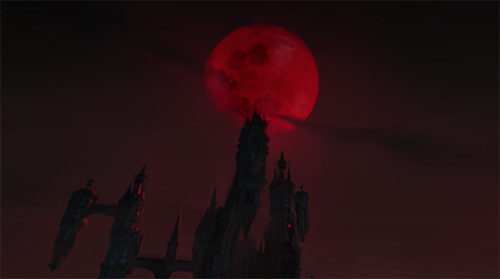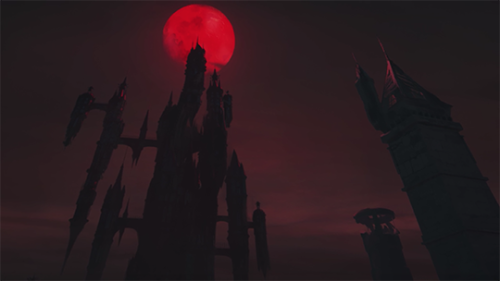New Writing Rule: Checkov’s Friend
New writing rule: Checkov’s friend
If you introduce a named character with a relationship to a protagonist, their character arc must be resolved in a way that feels reasonable and satisfying
Which is to say: they can’t just dissappear when they’re no longer a convenient plot device
More Posts from Cardinalfandom and Others
WEBSITES FOR WRITERS {masterpost}
E.A. Deverell - FREE worksheets (characters, world building, narrator, etc.) and paid courses;
Hiveword - Helps to research any topic to write about (has other resources, too);
BetaBooks - Share your draft with your beta reader (can be more than one), and see where they stopped reading, their comments, etc.;
Charlotte Dillon - Research links;
Writing realistic injuries - The title is pretty self-explanatory: while writing about an injury, take a look at this useful website;
One Stop for Writers - You guys... this website has literally everything we need: a) Description thesaurus collection, b) Character builder, c) Story maps, d) Scene maps & timelines, e) World building surveys, f) Worksheets, f) Tutorials, and much more! Although it has a paid plan ($90/year | $50/6 months | $9/month), you can still get a 2-week FREE trial;
One Stop for Writers Roadmap - It has many tips for you, divided into three different topics: a) How to plan a story, b) How to write a story, c) How to revise a story. The best thing about this? It's FREE!
Story Structure Database - The Story Structure Database is an archive of books and movies, recording all their major plot points;
National Centre for Writing - FREE worksheets and writing courses. Has also paid courses;
Penguin Random House - Has some writing contests and great opportunities;
Crime Reads - Get inspired before writing a crime scene;
The Creative Academy for Writers - "Writers helping writers along every step of the path to publication." It's FREE and has ZOOM writing rooms;
Reedsy - "A trusted place to learn how to successfully publish your book" It has many tips, and tools (generators), contests, prompts lists, etc. FREE;
QueryTracker - Find agents for your books (personally, I've never used this before, but I thought I should feature it here);
Pacemaker - Track your goals (example: Write 50K words - then, everytime you write, you track the number of the words, and it will make a graphic for you with your progress). It's FREE but has a paid plan;
Save the Cat! - The blog of the most known storytelling method. You can find posts, sheets, a software (student discount - 70%), and other things;
I hope this is helpful for you!
(Also, check my blog if you want to!)
I've only read the 13 main series books. I what order do you recommend I read the other books? (Mainly, Autobiography and Beatrice Letters before or after ATWQ and 13 Suspicious?)
An interesting question. Here’s the chronological order:
“29 Myths on the Swinster Pharmacy”,
“Who Could That Be At This Hour?” & “When Did You See Her Last?”,
“File Under: 13 Suspicious Incidents”,
“Shouldn’t You Be In School?”, & “Why Is This Night Different From All Other Nights?”
“The Dismal Dinner”,
“The Bad Beginning” and the notes from “The Bad Beginning: Rare Edition”,
From “The Reptile Room” to “The Hostile Hospital”,
“The un-Authorized Autobiography” and “Calendar of Unfortunate Events”,
From “The Carnivorous Carnival” to “The End”,
“The Beatrice Letters”.
And here’s my prefered, recommended order:
From “The Bad Beginning” to “The Grim Grotto”,
“The un-Authorized Autobiography”, “The Dismal Dinner”, “Calendar of Unfortunate Events” and the notes from “The Bad Beginning: Rare Edition”,
“The Penultimate Peril”,
“The Beatrice Letters”,
“The End”,
“29 Myths on the Swinster Pharmacy”,
“Who Could That Be At This Hour?” & “When Did You See Her Last?”,
“File Under: 13 Suspicious Incidents”,
“Shouldn’t You Be In School?”, & “Why Is This Night Different From All Other Nights?”
A lot of the supplementary material can’t really be enjoyed if you don’t have a basic knowledge of what happens during most of “A Series of Unfortunate Events”. This also applies to “All The Wrong Questions”, which is admittedly difficult to understand if you don’t have any idea of what VFD actually involves.





some castlevania halloween aesthetics
i just think it’s incredible how art can touch people and become facets of their identity... human beings’ capacity for empathy and honest, open understanding is astounding to me sometimes
The Jewish Monster Hunter's Toolkit
Have you ever seen The Fearless Vampire Killers, in which an unfortunate barmaid learns what happens when you use a cross against a stereotypically Jewish vampire? Of course you have. Or if you’ve haven’t, perhaps you’ve read ‘Salem’s Lot, where the cross fails to work when the human holding it loses their faith.
Don’t let this happen to you!
Whether it’s about your own religion or the undead’s, vampire-hunting heroines and heroes may wish to come prepared with holy tools besides those of Christianity. Fortunately for our purposes, my father is a Rabbi who has taught classes on folklore, golems, and demons (and who owns a large poster of a dybbuk which scared the living daylights out of me as a child.) And so I turned to him for advice as to what should be in the toolkit of Jewish monster hunters or hunters of Jewish monsters.
“There are written amulets,” he says, “sometimes involving God’s name in various spellings and permutations along with kabbalistic passages (I remember seeing one, to protect against Lilith, over the head of a baby boy in a stroller in Jerusalem).” As far as amulets go, I personally would recommend the hamsa, traditionally used to protect against witchcraft and the evil eye. It’s much more likely to help you than the star of david, which has no such symbolism.
If you can get your hands on them, my father also suggests looking into books as talismans, specifically the Sefer Raziel, which is said to protect against fire. You can also go the route of getting a secular coin or amulet blessed by a Rabbi, which may then take on holy powers.
Golems are the most famous “Jewish monster” but don’t entirely fit the bill as one; they are created to protect Jewish communities, though there are stories of them going insane or following orders far too literally and making a mess of things. The traditional way to deactivate one is to erase the first letter of the word on its forhead, changing the word from emet (truth) to met (death.) There is also a story of a Rabbi who destroyed one by speaking the words Hadar l'afreikh - return to your dust. Good luck pulling any of this off if you’re not incredibly holy and blessed by God, though.
“I’ve seen a hasidic story about a werewolf,” adds my father, “but as I recall that took some serious praying on the part of the rebbe to kill it.”
There is also some amount of folk belief attributed to the mezuzah, a holy fixture upon the doorframes of observant Jews (my family included.) In addition to its religious significance, Meir of Rothenburg wrote “If Jews knew how serviceable the mezuzah is, they would not lightly disregard it. They may be assured that no demon can have power over a house upon which the mezuzah is properly affixed.” This is one I would not advise non-Jews using, since it posesses genuine religious relevence and would be disrespectful to misuse, but if you’re Jewish and your home already has one, such things are good to keep in mind.
My point in all of this isn’t to reduce my religion to superstitions, but to demonstrate the wide range of tools heroines (and writers, for that matter!) have to represent the forces of light. If any of my readers know of monster-hunting tips from their own culture, please share- we can never be too educated!
Chapter 6: Lullaby in Frogland
Let’s look back. Way back. Back before the dawn of animation, before the dawn of film, well before Ruby or Spears or Disney or Iwerks or either Fleischer Brother. Back to 1835, in a town named Florida in a state named Missouri when a boy named Samuel was born.
Like Ub Iwerks, Sam was raised in Missouri. And like Max Fleischer, Sam’s family took a financial hit when his father’s work stopped (this time due to a premature death rather than the decline of tailory), giving Sam a practical approach to work. He left school at age eleven to become a printer’s apprentice, then moved to his older brother’s newspaper as a typesetter and occasional columnist, writing humorous articles and drawing cartoons. But unlike Beatrix Potter or the animators we’ve covered, visual art wasn’t in the cards for Sam.
He moved to the East Coast to work for other papers, bouncing between cities before returning to the midwest to embark on a career he’d dreamed of since he was old enough to dream: piloting a steamboat. He thrived on the water, and kept writing about his work along the river, but everything stopped when the Civil War closed off the Mississippi. So Sam headed west to work for the same brother who once ran the newspaper, now a politician in Nevada (I’d be remiss if I didn’t point out that this brother was for some reason named Orion). Sam tried mining, and it didn’t take, but he’d gotten pretty good at writing and set off for San Francisco to get back into his jocular brand of journalism.
It was here that he had his first success, a short story published in his paper called Jim Smiley and His Jumping Frog. But, like a certain frog we’ve covered in this series, Sam wasn’t huge on permanent names. Within a month, the story was reprinted as The Celebrated Jumping Frog of Calaveras County, and Jim Smiley’s name was changed to Jim Greeley. Until the book version came out, when it was changed back to Jim Smiley. And this whole time, within the story, it’s a mystery whether Jim’s real name is actually Leonidas (it turns out that it isn’t, but it might be). None of this should come as a surprise for Samuel Clemens, who wrote under the names of Josh, Thomas Jefferson Snodgrass, and most famously, Mark Twain.

“I knew you were special.”
Over the Garden Wall is, among other things, a story about the importance of solid communication. After five episodes spent building up our heroes as a group of friends, all it takes is one episode of terrible communication to throw it all away. The specific issues vary, despite leading to a similar result of not verbalizing their thoughts very well: Greg’s youth stops him from articulating his rapidly changing ideas, Wirt’s anxiety leaves him too timid to speak up or too rambling to be clear, Beatrice’s true intentions make her obfuscate the truth, and Jason Funderburker straight-up can’t talk. Or so we think.
This time he’s named for American statesmen George Washington and Benjamin Franklin, which fits the continuing vintage Americana vibe of the series—while I figure it’s a coincidence, it should be noted that Mark Twain’s Jumping Frog was named after American statesman Daniel Webster. Surrounded by other frogs that walk around and wear fancy garb, our frog is more anthropomorphic than ever, standing on his hind legs and dancing along with Greg. But it’s still a shock to hear him open his mouth and sing, a shock that soon cedes to the realization that the frog playing the piano at the beginning of the series is singing the Jack Jones song in the montage that follows.
Lullaby in Frogland is Jason Funderburker’s episode through and through, so much so that it’s the first time we hear of his namesake, Jason Funderberker. This is an episode where Wirt rejects Greg’s assertion that their frog is “our frog,” a plot point that’s paid off in their last conversation in the series. This is an episode where Greg wonders aloud if he can be a hero, sees the frog set off on a diverging path immediately afterwards, and accepts it, because he’s willing to sacrifice his happiness for the good of others. And it’s an episode where the frog returns after a harrowing betrayal, showing that even when all seems lost, there’s still room for hope. Over the Garden Wall (the song) might not sound like a traditional lullaby, but it soothes us into a cold night as the sun sets on the first half of Over the Garden Wall (the show).

Adelaide’s true nature is foreshadowed by Beatrice’s sudden hesitance to bring the brothers to the pasture after several episodes of nagging, but the twist is made tragic by Wirt finally letting his guard down enough to be happy. He sings a completed Adelaide Parade with Greg and joins the dance before collapsing into the most earnest laughter I’ve ever heard in a cartoon. He’s a good enough friend to notice when Beatrice is “uncharacteristically wistful,” and takes a risk by playing the bassoon instead of just giving up. He’s still got growing to do—it’s one thing to blame Greg for getting them in trouble by throwing away the ferry fare and forcing them to sneak aboard, but another thing to literally shout “Take him, not me!” when confronted by the frog fuzz—so it’s clear that his journey isn’t over yet, but he doesn’t even get a full episode of peace before everything blows up.
The whole steamboat sequence flows between simple delights, like saluting the captain mid-chase, the revelation that the frogs love music more than they hate trespassers, and the repeated gags of three gentlemen frogs snatching up flying flies and a frog mother dropping her tadpoles. Everything just feels calm, even when antics are afoot. Wirt gets to save the day with his bassooning, Greg gets to feel rewarded in his knowledge that his frog is special, Jason gets to sing a song after being silent throughout the series, and Beatrice seems, for now, to come to a sort of peace about things after several clear attempts to sidetrack the boys. This is the only episode to feature two major stories instead of one, but the steamer segment is rich enough to feel like a full episode. If only we could’ve stopped here.

All roads lead to Twain when it comes to depictions of steamboats as a go-to American icon, which is why he preceded this discussion of Lullaby in Frogland: I’m not claiming Mickey Mouse wouldn’t have been successful if his first cartoon was about something else, but I’m certainly claiming that we wouldn’t have gotten Steamboat Willie as it was if Ub Iwerks hadn’t grown up in a Missouri whose lore was shaped by Twain’s tales of the river. But while the author’s at the root of the episode’s many influences, I think the most fascinating branch that we borrow from is The Princess and the Frog.
2009 was a great year for animation, seeing the release of Coraline, Fantastic Mr. Fox, The Secret of Kells, the surprisingly great Cloudy With a Chance of Meatballs, and the first ten minutes of Up (also the rest of Up, if I’m feeling generous). The first two on that list are my favorite of the year, twin stop-motion masterpieces that I’m always in the mood to watch, but The Princess and the Frog is a brilliant last gasp from Disney’s 2D animation studio. It isn’t the final traditionally animated film they made (that would be 2011′s Winnie the Pooh), nor the final fully sincere princess movie they made (that would be 2010′s Tangled), but it marks the beginning of the end for both trends: for better and worse, the modern Disney animation feels the need to loudly subvert old tropes and wouldn’t be caught dead in two dimensions.
Lullaby in Frogland’s connection to The Princess and the Frog is certainly visible on the surface level: both feature a long sequence starring frogs on a steamboat where a lead character must pretend to be another animal and play a woodwind instrument to get out of a jam, and both involve our heroes seeking help from a wise woman far from civilization (even if only one of these women is actually helpful). But it’s the somber nostalgia factor that binds these stories closer than anything, the knowledge that this is the end of the road for this type of tale. The ferry’s gotta land somewhere, and the cold is setting in as the frogs begin hibernating for the winter, but there’s still more story to tell.

The second story of Lullaby in Frogland is scored throughout by a haunting string and piano rendition of Adelaide Parade, and Adelaide herself is immediately captivating. John Cleese returns for the second episode in a row, but as both of these episodes aired the same night, it feels like a consistent through-line: in the first half, he’s an eccentric who might be a deranged maniac but is actually harmless, and now he’s a witch who might be harmless but is actually a deranged maniac.
Adelaide gets a compelling amount of detail for someone who’s barely in the show. We don’t get any explanation about her fatal weakness to…fresh air? Coldness in general? Either way, like the Wicked Witch of the West’s lethal reaction to water, it’s absurd that someone like her has managed to live this long. She never says what she needs a child servant for, why she has scissors that seem custom-made for this specific curse, or what her spider-like deal with yarn and wool is (she has a black widow hourglass on her back, but also reminds me of the Greek Fates with her emphasis on thread). We never find out how she’s connected to the Beast, whose theme bleeds into her music as she proclaims, without much prompting, that she follows his commands; her goal of using children as zombie slaves seems counter to his goal of turning them into trees to fuel his soul lantern. But this blend of unexplained characteristics and seemingly inconsistent motives only makes her more enthralling to me, because she feels like an actual major villain of another story who we only see a glimpse of.
What makes Adelaide even more compelling on rewatch is that her scissors, despite their gruesome method for curing the curse, actually end up working. Which means she really did mean to help Beatrice out as part of the deal. At no point does Adelaide lie, and given Beatrice knows she’s bad news as she lures the brothers in, it becomes clear that for all her villainy, Adelaide is an honest witch. I’m always down for baddies that tell the truth, but it’s of particular interest when we compare her to the Beast, whose whole deal is lying.
The only liar in this episode is Beatrice, even if she wanted to set things straight without hurting anyone; she values her friendship with the boys so much now that she’d rather make herself a servant to Adelaide than just tell them she’s dangerous and reveal that she lied. By the time she’s willing to tell the truth, it’s too late, and not even saving Greg and Wirt by killing Adelaide is enough for Wirt to forgive her. Considering he knows in The Unknown that the scissors he uses to escape the yarn can save her family, he was also listening in on the end of the conversation before entering the house, which means he must have heard that she was willing to sacrifice herself, but that doesn’t matter either. Beatrice gave the boys hope, and no matter how badly she tried to stop it, the encounter with Adelaide transforms Wirt. Where he was once nervous and unsure, and was then briefly optimistic, he’s now sullen and untrusting.
But again, in comes Jason Funderburker, croaking and hopping on all fours once more to bring some light to the darkening series. He doesn’t do much for Wirt, but allows Greg to quickly get over whatever trauma he had about getting webbed up in yarn; he’s remarkably quiet about it, but it’s important to remember that he was betrayed, too. Whether he doesn’t understand exactly what happened or is just quicker to forgive, Greg is fine with Beatrice, allowing us to focus harder on Wirt’s reaction from now on.

It’s all rain and winter for Wirt until the end of his adventure. But the show’s not content to leave him even slightly forlorn: when it gets too dark, he has a frog to swallow a lantern to light the way, and when it gets too cold, he has a brother to cover him in leaves, and when he falls, he has Beatrice to help pull him back up. Even the Woodsman tries to save him in his own way (talk about folks who are bad at communication). Bad things happen, and people make mistakes, but the bigger mistake is allowing that to close you off to others, or to never forgive friends that are genuinely sorry. Our heroes have taken the ferry to the other side, and now the story can shift to one about the folly of abandoning all hope.
Where have we come, and where shall we end?

On top of Jason Funderberker, who’s set up as a major rival to make his eventual reveal one of the show’s best jokes, Wirt gives Beatrice a general summary of Into the Unknown three episodes before we see it play out.
If she's your girl then why am I named as the sole heir in her will?

of course I do
Do Hangfire and V.F.D. share a secret criminal past?

An overlooked aspect of “All The Wrong Questions”’s complex plotting is the apparently extensive knowledge Hangfire managed to compile on the V.F.D. organization. It seems that his sinister Inhumane Society acts as an evil (well, slightly more evil) counterpart to the volunteers, copying a number of their most frequent methods: disguises, arson, secret messages, trained animals, etc.
“The jig’s up for Snicket,” Stew sneered. “The boss told me to make sure he suffered. Hangfire has a particular revulsion for members of V.F.D.” [Shouldn’t You Be In School?, Chapter Twelve]
“That’s exactly wrong,” I said. “You’ve concocted a beautiful plan, Hangfire. I’m not going to mangle it.” He turned his mask to me. “But V.F.D. stands for the true human tradition of justice and literature,” he said. “I thought you’d find a lawless world an ugly place.” [Why Is This Night Different From All Other Nights?, Chapter Nine]
But we don’t exactly know HOW and WHY Hangfire got all this information. Dashiell Qwerty is young, but he’s clearly been the librarian of Stain’d-by-the-Sea for quite some time. When did V.F.D. start investigating the secrets of this town? And how does that factor in with the history of Inhumane Society? It seems that Hangfire and V.F.D. are much closer than either cares to admit.
The following article is highly speculative but nevertheless tries to paint a coherent narrative around Armstrong Feint’s start of darkness. Find out how V.F.D. created its own worst enemy after the cut.
Читать дальше
-
 phuongcmg liked this · 1 week ago
phuongcmg liked this · 1 week ago -
 the-sacred-now reblogged this · 1 week ago
the-sacred-now reblogged this · 1 week ago -
 jdunkirk reblogged this · 1 week ago
jdunkirk reblogged this · 1 week ago -
 thatlittlebandit reblogged this · 1 week ago
thatlittlebandit reblogged this · 1 week ago -
 neverlast1 reblogged this · 1 week ago
neverlast1 reblogged this · 1 week ago -
 neverlast1 liked this · 1 week ago
neverlast1 liked this · 1 week ago -
 klatchianmist reblogged this · 1 week ago
klatchianmist reblogged this · 1 week ago -
 klatchianmist liked this · 1 week ago
klatchianmist liked this · 1 week ago -
 attackboss6 reblogged this · 1 week ago
attackboss6 reblogged this · 1 week ago -
 chibisketches reblogged this · 1 week ago
chibisketches reblogged this · 1 week ago -
 zahachi-eithne reblogged this · 1 week ago
zahachi-eithne reblogged this · 1 week ago -
 zahachi-eithne liked this · 1 week ago
zahachi-eithne liked this · 1 week ago -
 thatvamp liked this · 1 week ago
thatvamp liked this · 1 week ago -
 captainmaumau92 reblogged this · 1 week ago
captainmaumau92 reblogged this · 1 week ago -
 ninjaloka reblogged this · 1 week ago
ninjaloka reblogged this · 1 week ago -
 ninjaloka liked this · 1 week ago
ninjaloka liked this · 1 week ago -
 rusherbooks reblogged this · 1 week ago
rusherbooks reblogged this · 1 week ago -
 cryptidisland liked this · 1 week ago
cryptidisland liked this · 1 week ago -
 eowyntheavenger liked this · 1 week ago
eowyntheavenger liked this · 1 week ago -
 littlenihilistbabe liked this · 1 week ago
littlenihilistbabe liked this · 1 week ago -
 calliopechild reblogged this · 1 week ago
calliopechild reblogged this · 1 week ago -
 violet-witch-6 reblogged this · 1 week ago
violet-witch-6 reblogged this · 1 week ago -
 theredandwhitequeen reblogged this · 1 week ago
theredandwhitequeen reblogged this · 1 week ago -
 eggbeanboy liked this · 1 week ago
eggbeanboy liked this · 1 week ago -
 transgenderastarion liked this · 1 week ago
transgenderastarion liked this · 1 week ago -
 stormbeyondreality reblogged this · 1 week ago
stormbeyondreality reblogged this · 1 week ago -
 protectorandkingof-chilladelphia reblogged this · 1 week ago
protectorandkingof-chilladelphia reblogged this · 1 week ago -
 duskaria liked this · 1 week ago
duskaria liked this · 1 week ago -
 notagiraffe reblogged this · 1 week ago
notagiraffe reblogged this · 1 week ago -
 sirzenithknight9 reblogged this · 1 week ago
sirzenithknight9 reblogged this · 1 week ago -
 catalllo reblogged this · 2 weeks ago
catalllo reblogged this · 2 weeks ago -
 dance-beneath-the-diamond-sky reblogged this · 3 weeks ago
dance-beneath-the-diamond-sky reblogged this · 3 weeks ago -
 stubbsetc liked this · 1 month ago
stubbsetc liked this · 1 month ago -
 prufrockismymantra reblogged this · 1 month ago
prufrockismymantra reblogged this · 1 month ago -
 twowanderingfeet reblogged this · 1 month ago
twowanderingfeet reblogged this · 1 month ago -
 xoheartsaurore liked this · 1 month ago
xoheartsaurore liked this · 1 month ago -
 waywardangel-wilds liked this · 1 month ago
waywardangel-wilds liked this · 1 month ago -
 xoheartsaurore reblogged this · 1 month ago
xoheartsaurore reblogged this · 1 month ago -
 chancellorcannoli reblogged this · 1 month ago
chancellorcannoli reblogged this · 1 month ago -
 oh-goodness-loki reblogged this · 1 month ago
oh-goodness-loki reblogged this · 1 month ago -
 cantstopthegay reblogged this · 1 month ago
cantstopthegay reblogged this · 1 month ago -
 tbiris reblogged this · 1 month ago
tbiris reblogged this · 1 month ago -
 wannabelikemaryleigh liked this · 1 month ago
wannabelikemaryleigh liked this · 1 month ago -
 chaoticbutterflyrebel liked this · 1 month ago
chaoticbutterflyrebel liked this · 1 month ago -
 mainlyvoid reblogged this · 1 month ago
mainlyvoid reblogged this · 1 month ago -
 allthosegoddamnthings reblogged this · 1 month ago
allthosegoddamnthings reblogged this · 1 month ago -
 violet-bakersfield liked this · 1 month ago
violet-bakersfield liked this · 1 month ago -
 seekingstarlightinthecity reblogged this · 1 month ago
seekingstarlightinthecity reblogged this · 1 month ago

